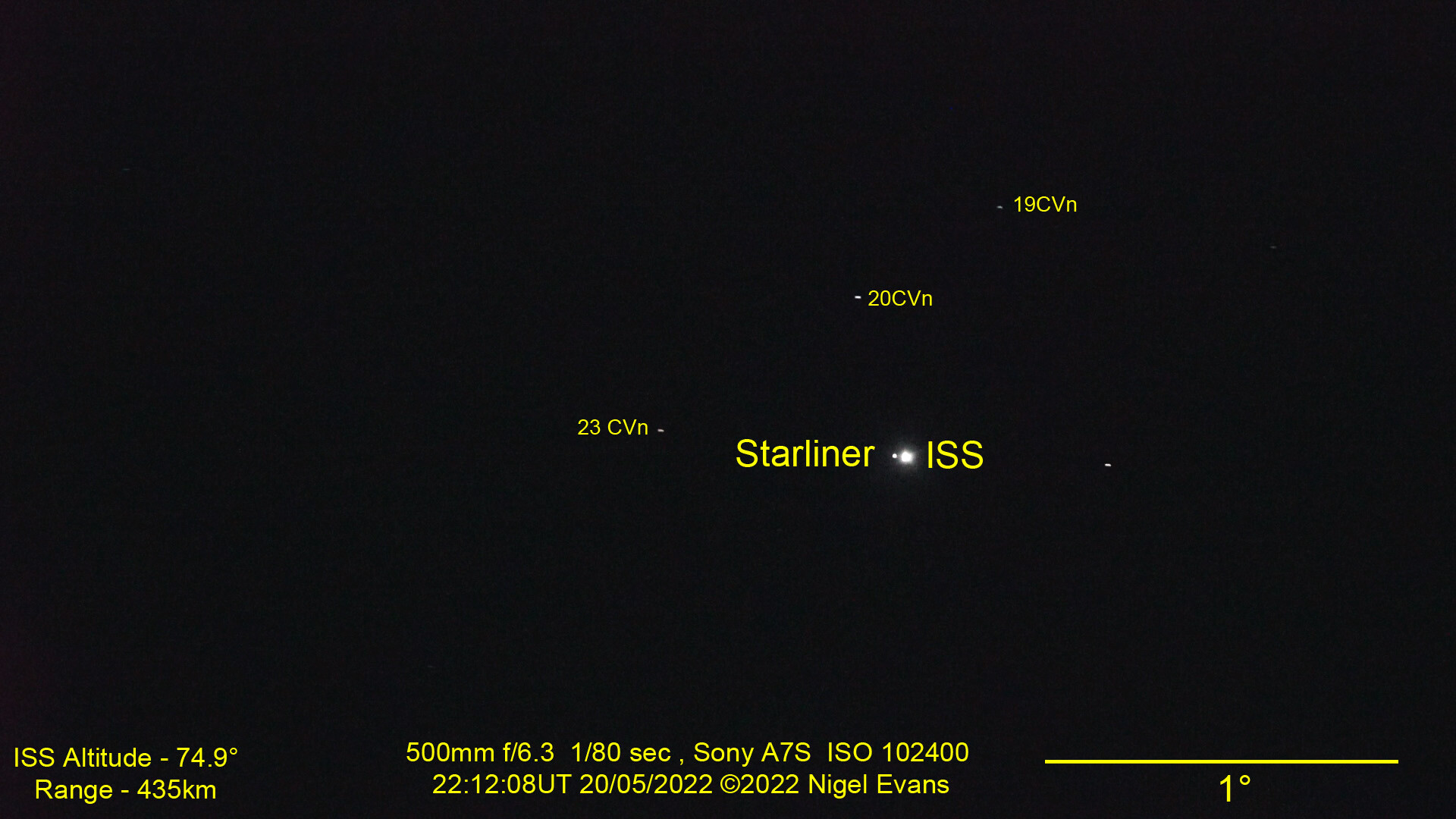
Orwell Astronomical Society (Ipswich)
Starliner And ISS, 21-25 May 2022
Boeing's Starliner space capsule was finally launched on 19 May 2022 for an unmanned mission to the ISS. The two craft docked at 00:28 UT two days later.
On the evening of 20 May, prior to docking, there were a couple of passes of the ISS and Starliner in close proximity. The first was in twilight but the second was a good high elevation pass (77° altitude) around 22:12 UT. At that time Starliner was co-orbital with the ISS, slightly ahead.
I decided to record the pair flying in formation. In order to show the craft separately, I chose a 500 mm telephoto lens, and planned to follow the target manually. I set the exposure by guesswork. The results are below. I'm pleased with this first attempt, although there is clearly room for improvement!
The following still is taken from the video. The craft are 435 km distant, and I crudely estimate that the Starliner is about 1.8 arcminutes ahead of the ISS, corresponding to a separation of 230 m.
The unmanned Starliner remained attached to the ISS for a few days before departing at 18:36 UT on 25 May. At 22:05 UT it fired its retro-rockets to re-enter the Earth's atmosphere. It landed in Texas at 22:49 UT.
There was an evening pass of the ISS above the UK around 21:25 UT with an elevation of some 42°. And the weather was OK. What an opportunity! I used the same camera and telephoto lens as for the approach but was again unsure how far apart the craft would be. From my location the pair would pass close to Regulus so I lined up and waited for them to enter the field of view. When they appeared I was surprised at how far apart they were and it concerned me that they might not fit into the field of view at closest approach. But it was too late to change any settings on my equipment. So my challenge was not to keep one object in the middle of the field of view but to keep two objects from falling out of one side or the other.
Although each frame in the raw video has reasonably point-like images, alignment and stability are not good! The real time duration of the video is 90 seconds. I have processed it and displayed as follows below. In the first segment, each group of 25 consecutive frames (a second's worth) is summed to form a frame, so the video is shrunk in duration from 90 seconds to 90 frames and plays in under four seconds. To create the second segment, I realigned all 2000+ frames of the video on the ISS, making the sky appear to pivot on the craft. I then summed frames three at a time, shrinking the video to 30 seconds duration. At about 28 seconds into the clip (when the star 31 Vir is highlighted) the ISS was at closest approach of about 600 km. The angular separation of Starliner and the ISS at this time was just under 3°, corresponding to some 30 km linear distance.
Observations by others are available: https://vimeo.com/712225662 and on the BAA website https://britastro.org/observations/.
Nigel Evans